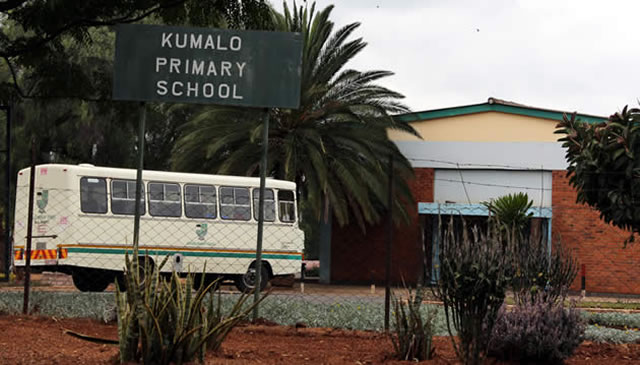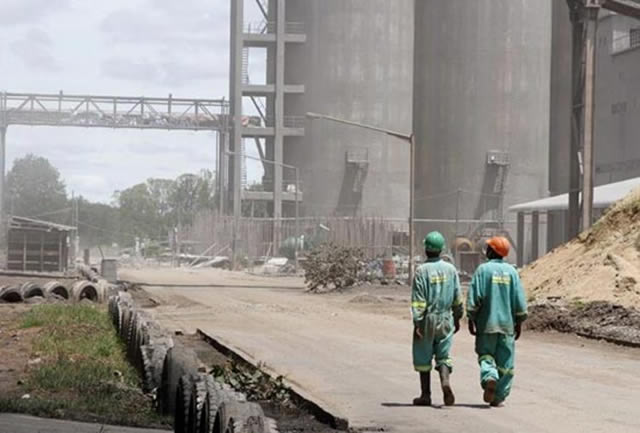Kumalo Primary — the ‘private’ govt school

 Arnold Mutemi
Arnold Mutemi
WITH its perfectly manicured lush green lawns, Kumalo Primary School looks like an expensive private school which the children of the affluent attend.
The school grounds are immaculate while the classroom walls are spotlessly clean.Yet, the school is government-owned and receives the same grants allocated to other government schools.
Kumalo is different from most other government schools because it is in a class of its own when it comes to the state of its infrastructure.
Senior education officials in the city jokingly refer to it as Kumalo Private Government School.
To a person who has been to other government schools, it might take some time for it to sink in that Kumalo is in the same category as those schools, charging almost the same fees.
The school does not in any way resemble most government schools whose buildings are in a state of disrepair with classrooms in desperate need of a fresh coat of paint.
In recognition of the high standards at the school, the district education officer for Mbizo district last week organised a trip for school heads and School Development Association leaders from the district to learn how Kumalo has managed to set such high standards and see how they could emulate the school to improve infrastructure at their schools instead of just complaining that there is no money.
The visitors were taken on a tour of the school by the head, Musa Dungeni.
It is not only Mbizo district which has recognised the school.
Last year, the school was awarded the Secretary’s Bell Merit Award for excellence in the education field during the course of the year.
Dungeni says the situation at the school has not always been like this.
She remembers when she was first appointed to the school in 2004, how the grounds were bare and paint peeling off walls.
Dungeni set off to improve the standards.
But it was not easy at first.
The SDC she found in office would always say there was no money if she suggested improvements.
However, with time, a new executive committee came into office and shared her vision to transform the school.
She said the key to the school’s success, apart from successive progressive SDCs, has been the ability to create relationships with private companies that have helped develop the school.
She recalls how one day she approached a manager with road construction company Group Five, who the next day turned up with workers to pave the then heavily potholed drive way leading into the school free of charge. And she didn’t know the man until that day.
“We didn’t pay a single dollar, it was for free,” Dungeni said.
The school’s computer laboratory was furnished with assistance from Edgars and Udine Products while one parent teamed up with friends to provide more desks.
“You don’t need a lot of money to achieve what we’ve done,” she said.
Dungeni said the school charges a $40 levy per term while pupils also pay $9 to the general purpose fund.
Kumalo is the first government school in the country to build a block specifically for Early Childhood and Development.
When the government introduced ECD a few years ago, most schools were forced to use existing infrastructure to accommodate grade zeros.
However, most of the infrastructure is not suitable for younger learners who need special toilets.
Initially, Kumalo authorities wanted to convert a sports pavilion into an ECD block but when plans were sent to the Ministry of Local Government, Public Works and National Housing, the ministry returned plans for a stand alone building.
Dungeni said they introduced a $90 building levy and now the ECD block is up and running.
The block has an access ramp and a toilet for pupils using wheel chairs though none are enrolled at the moment.
In 2013, a Home Economics block was commissioned. Prior to that, pupils were only taught theory in Home Economics.
Kumalo is one of the few government schools still maintaining a swimming pool.
Most schools have drained their pools because of the huge expense involved in running them.
The staff room resembles a boardroom of a private company. It has a boardroom style round table and matching chairs.
“This staff room had threadbare fitted carpet and teachers didn’t want to come here. They would have their tea in classrooms. Now, they no longer refer to it as staff room, they say it’s a boardroom,” she said.
Chairman of the Kumalo SDC Mandla Maphosa said the singling out of the school as an example of excellence was heartening and would spur them to achieve higher standards.
He attributed the maintaining of standards at Kumalo to the co-operation between the school management and the SDC.
“It’s very humbling because it means we’re doing something right. We’re seen as role models in terms of how SDAs/SDCs are supposed to work with school management.
“I must say this visit will spur us to raise the bar because everyone is looking at us as a school and we’ve to keep shining,” said Maphosa.
He said it was crucial for SDCs and school heads to show mutual respect and work hand in hand as opposed to flexing muscles to show who is more powerful.











Comments